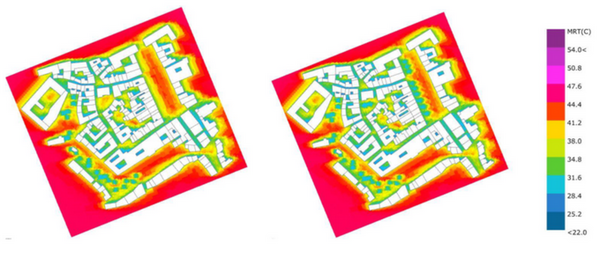It's getting hotter every year. This or similar phrases are heard each summer when the heat in the city becomes unbearable once again. Due to the large amount of sealed surfaces and the lack of green spaces, urban areas are particularly affected by the negative impacts of the climate crisis.
However, these conditions are not unchangeable. With the help of climate-adapted urban planning, the heated city can be cooled down by a few degrees. But how effective are measures such as decoupling and greening in concrete terms? Tanja Tötzer, expert for climate-resilient cities at the Center for Energy, presents the City Intelligence Lab in the new video format of the Wiener Zeitung and explains which measures can improve the microclimate in a district or neighbourhood. In the CLARITY project, simulations were carried out in the old town of Linz. Researchers at AIT were able to demonstratethat a row of trees on the west side of the main square could reduce the average radiation temperature at the square by up to 12°C.
In the project, digital solutions and tools were developed for climate experts and urban planners. The prototype developed within the framework of the project is based, among other things, on the data analysis system EMIKAT developed by researchers at the AIT Center for Digital Safety & Security. This makes it possible to calculate climate hazards and their potential impact on infrastructure and population and to estimate the effectiveness of climate adaptation options for cities throughout Europe.
The subsequent project, KLIMALINZ, will make this prototype usable for urban climatic planning in Linz. The digital KLIMALINZ tool is intended to support both internal urban planning and urban climatology experts in their daily work and external planners (such as infrastructure and real estate developers or architectural firms) in project submissions.



